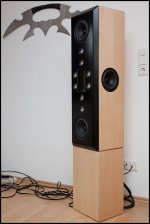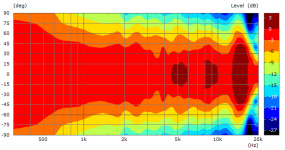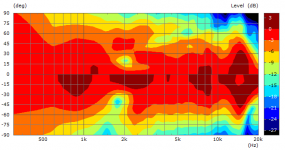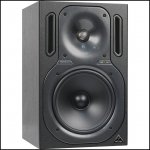There are no harmonic distortion components meant by HOM but temporal errors (and subsequently also frequency response errors) due to unwanted paths that the sound takes between throat and mouth of the horn.
Regards
Charles
Regards
Charles
There are no harmonic distortion components meant by HOM but temporal errors (and subsequently also frequency response errors) due to unwanted paths that the sound takes between throat and mouth of the horn.
Regards
Charles
Hello,
Yes time and phase are an important part. I also read that there are resonances that may be excited possibly related to the reflective paths between throat and mouth, plus standing waves across the transverse dimension of the structure that cause anti-resonance (a notch in the frequency response)
I do not doubt what you add, it would be interesting to see more of this stuff in one location. Please provide a reference for your added information.
Seems like there is a lack of consensus.
This is a clip taken from the GedLee.com site; http://www.gedlee.com/Papers/THD_.pdf http://www.gedlee.com/Papers/Comments on howard.pdf Weighted Harmonics are discussed here.
Thanks DT
Last edited:
We are still kicking around HOM’s. Graphically we do not know what they look like. We do not have a standard test procedure to measure them.
Pages 5-7 of this paper by JMLC illustrate how HOM can be graphically obtained via a spectrogram using the continuous wavelet method. I’ve posted this before and Dr. Geddes raised no objections to this methodology after looking it over.
I have read the original avsforum thread before (not all of them), and I remember that most of the participants of this listening test says the difference between M2 and Salon is a spatial impression. It is more natural for me to think that the small difference of directivity affects a lot more than we think, especially @mono in a regular room.
Also, the directivity of mid low frequency should not be overlooked, some participants says that mid low is somewhat less clear with Salon, but they still prefer it over M2, which probably means those participants chose the rich soundstage over the clearness.
Also, the directivity of mid low frequency should not be overlooked, some participants says that mid low is somewhat less clear with Salon, but they still prefer it over M2, which probably means those participants chose the rich soundstage over the clearness.
Maybe they chose the salon because of the unnerving sound the jbl produces.
A bit like open baffle vs boxed argument
Some may like the room effecting the sound and are accustomed to it
But I prefer removing the room from the sound😛
A bit like open baffle vs boxed argument
Some may like the room effecting the sound and are accustomed to it
But I prefer removing the room from the sound😛
Pages 5-7 of this paper by JMLC illustrate how HOM can be graphically obtained via a spectrogram using the continuous wavelet method. I’ve posted this before and Dr. Geddes raised no objections to this methodology after looking it over.
Great paper, thank you.
It contrasts HOMs with reflections, in easy to understand fashion...
That study refers to non-linear distortion rather than acoustic modes.HOM’s receive the blame for a lot of things. In my view there is no understanding or complete disagreement about what they are.
1st and 2nd Harmonics are low order modes, intermodulation is a step higher. There are published papers that say that LOM’s are not audible to we humans. For LOM’s the signal masks the distortion.
That study refers to non-linear distortion rather than acoustic modes.
Hello,
It is not a specific study with computer generated signals played back on ear phones that we are speaking of. It is more someone’s personal listening room we are speaking about. Using Figure 10-3 in the GedLee text book as a guide both the linear HOM’s of phase delay, amplitude error and nonlinear compression driver caused 2nd and 3rd harmonics are added at the summing node of the feedback/System Block, we may have real world 2nd and 3rd harmonics being delayed (unmasked) to the point of being noticeability bad.
Just saying that the distinction you are trying to make may not not be a real world difference.
Thanks DT
I’ve listened to JBL M2
It sounds quite nice up until the upper midrange and treble where it sounds worse than many PA speakers I have listened too. Same for JBLs other hi end speakers. I think they know not what they are doing with these products and highlights the problem of real world psychoacoustics vs using measurements and assuming what humans prefer over what we actually hear
It sounds quite nice up until the upper midrange and treble where it sounds worse than many PA speakers I have listened too. Same for JBLs other hi end speakers. I think they know not what they are doing with these products and highlights the problem of real world psychoacoustics vs using measurements and assuming what humans prefer over what we actually hear
But I prefer removing the room from the sound😛
after reading this thread, lots of misconception about room acoustic and horns
Horns limits the room interaction, but definitely do not remove it. A simple ETC measurements will clearly show this
1st and 2nd Harmonics are low order modes, intermodulation is a step higher. There are published papers that say that LOM’s are not audible to we humans. For LOM’s the signal masks the distortion.
1st order harmonic is the original signal, in the overtone series it is called 'fundamental'.
Fairly certain it is audible. 🙂
1st order harmonic is the original signal, in the overtone series it is called 'fundamental'.
Fairly certain it is audible. 🙂
Charles Darwin,
Got me!
It was a brain fart error. I did intend to say 2nd and 3rd Harmonics.
In the spirit of nit picking, 1st Harmonic is not always the original signal; it can be stored energy as in ringing, it can be unintended feedback, or it can be one of the distortion products in a vacuum tube, just to name a few. If it not too far out of phase or ring too long it is just a little smearing or added color, still distortion and audible.
Thanks DT
I think the thread title is a bit misleading. Direct radiator or not ist not relevant. Only the directivity index (+ the exact radiation pattern) matters.
I developed a speaker (Quasikoax 1) which has a wide horizontal dispersion and a very narrow vertical one. The overall directivity index is very high. I approximated it out of the horizontal, vertical and diagonal measurements and used Tylka's formula.
The speaker uses mostly interference to create a high directivity. Only the tweeter uses a vertical long diaphragm and a shallow waveguide for the horizontal dispersion. So this speaker produces virtually no HOMs.
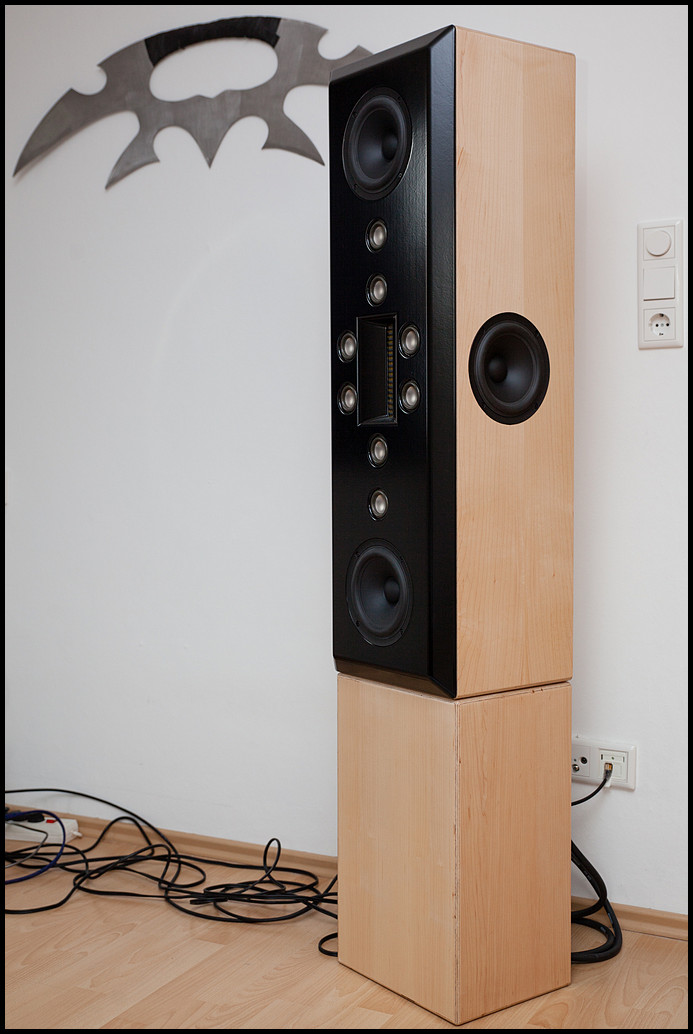
Horizontal:
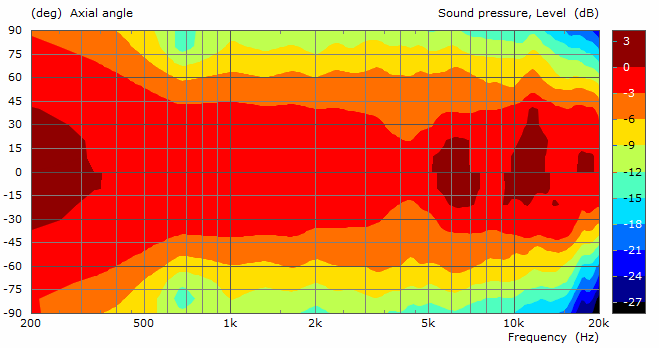
Vertical:
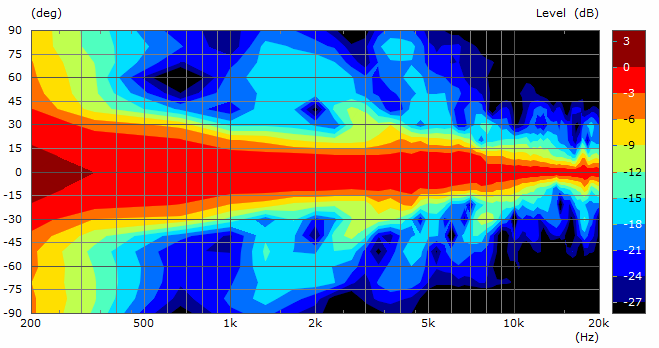
ETC on listening position:
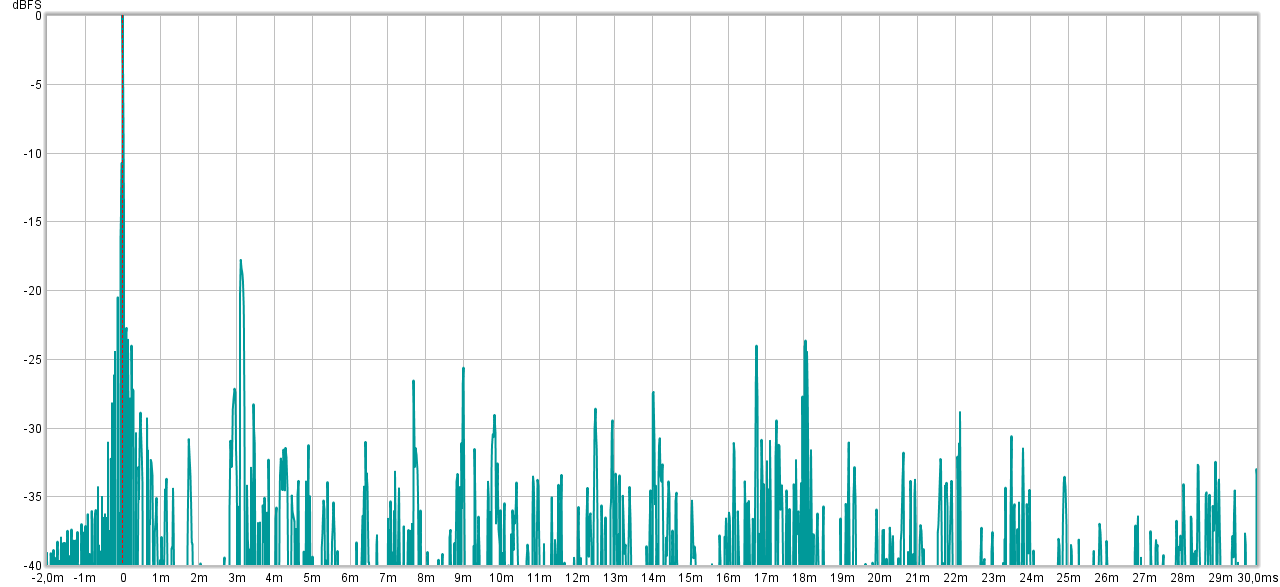
I compared it to a small 2-way monitor (Behringer B2031A). Its horizontal dispersion differs not much from the Quasikoax 1. The vertical is nearly as wide as the horizontal one. Which leads to a much lower overall directivity index.
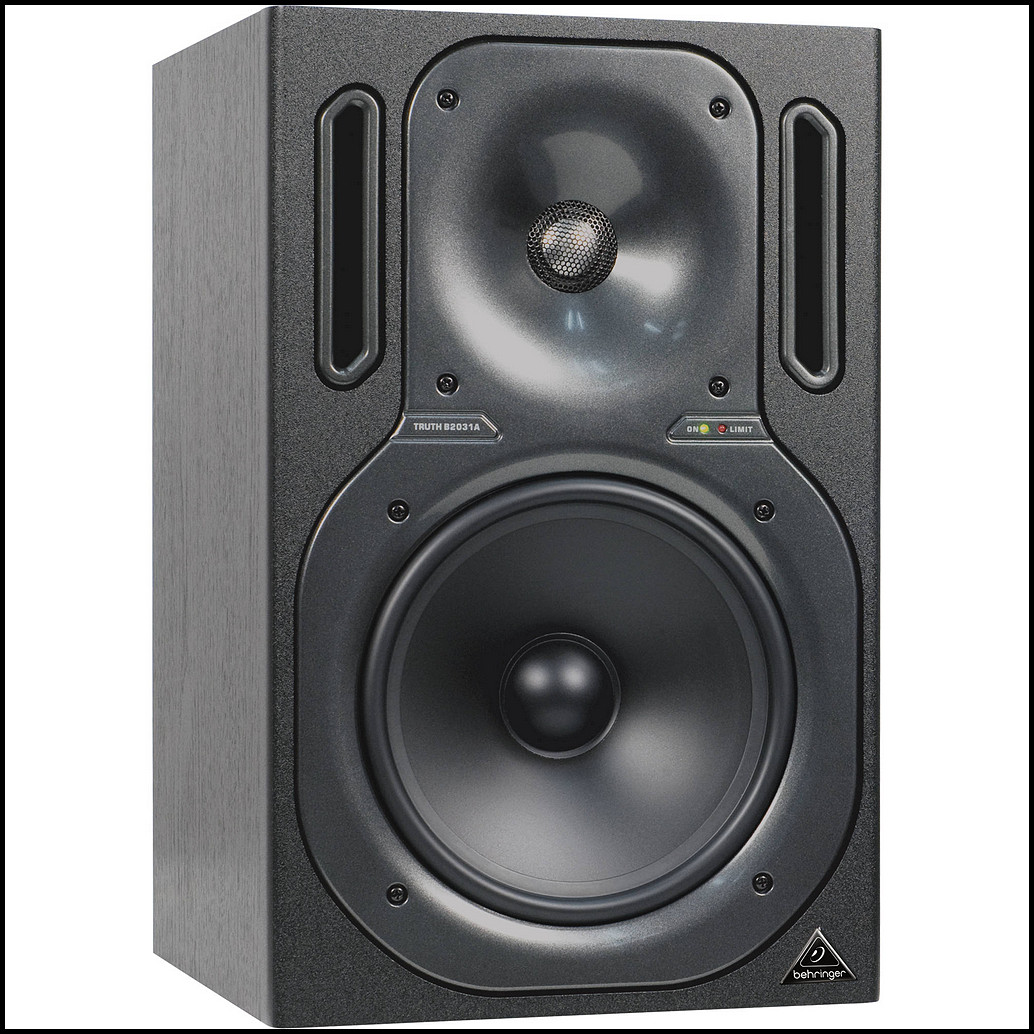
Horizontal:
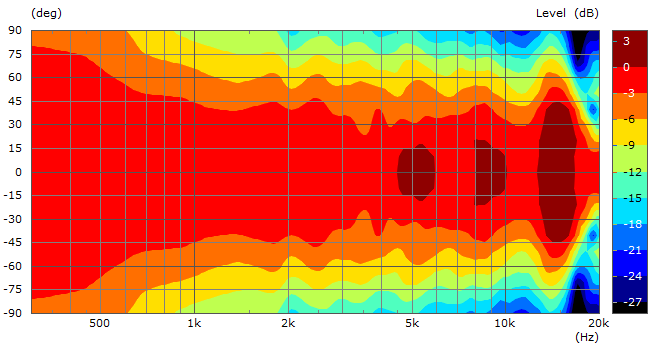
Vertical:
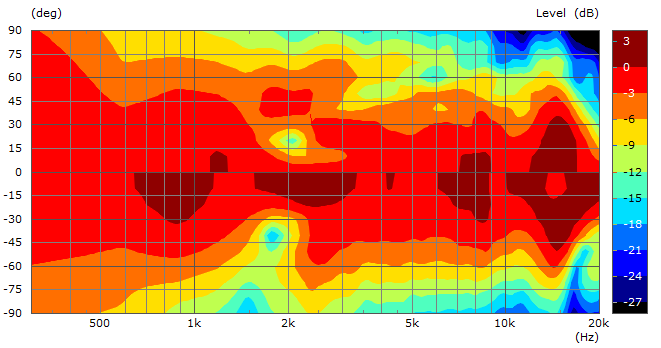
ETC on listening position:
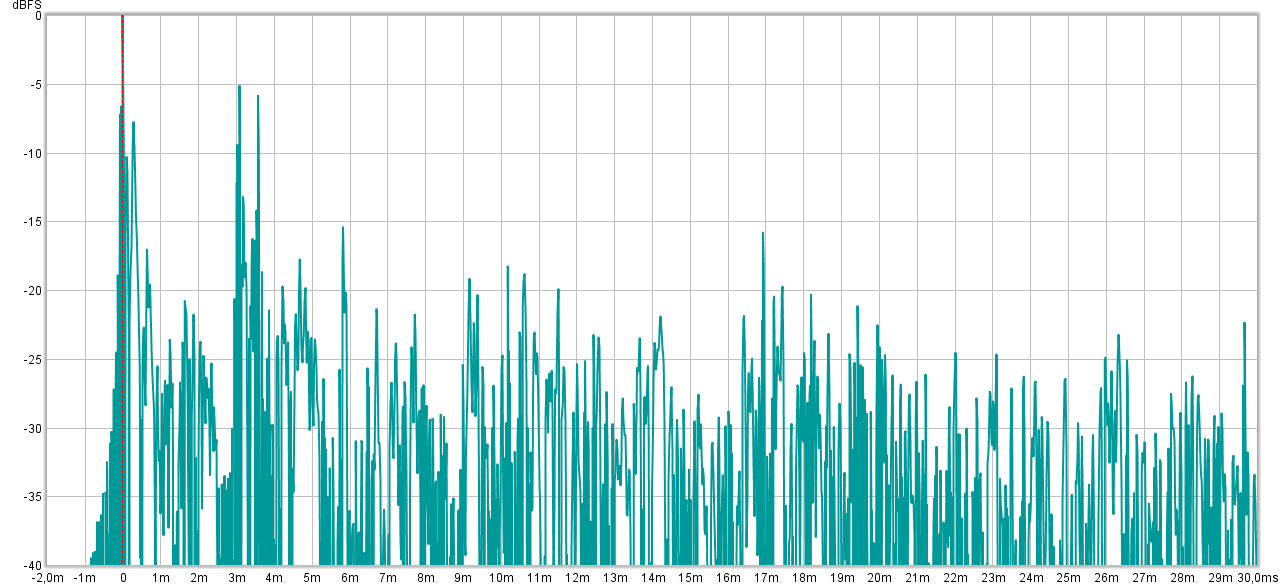
The perceived results are as follow:
Quasikoax 1:
- much less room interaction (look at the ETC)
- stable imaging
- sound balance is slightly dull
- sound ist localized very near when there is no room information on recording ("in your face")
- when recording transports room information (e.g. classics) it is like listening through a window into the recorded room
2-way monitor:
- much more room interaction (look at the ETC)
- localization is as far as the speaker stands away (and soundstage is very "flat")
- less stable imaging
- sounds brighter
- no "window effect". One always nows that the sound source is in the living room.
You can exchange the Quasikoax 1 with a similar horn speaker and I bet you get the same perceived differences.
And another thing: while developing the Quasikoax 1. I had several prototypes and also listened to them rotated. That means they were aligned horizontally and the dispersion pattern swapped. The difference was not that big, but it was there. Imaging in an asymmetric room was better when horizontal dispersion was narrow (not new at all). The sound balance changed a bit too. With wider horizontal dispersion it sounded a bit brighter, but not much. The difference was only subtle. In fact it was nothing compared to a speakers with overall low directivity index.
I developed a speaker (Quasikoax 1) which has a wide horizontal dispersion and a very narrow vertical one. The overall directivity index is very high. I approximated it out of the horizontal, vertical and diagonal measurements and used Tylka's formula.
The speaker uses mostly interference to create a high directivity. Only the tweeter uses a vertical long diaphragm and a shallow waveguide for the horizontal dispersion. So this speaker produces virtually no HOMs.
Horizontal:
Vertical:
ETC on listening position:
I compared it to a small 2-way monitor (Behringer B2031A). Its horizontal dispersion differs not much from the Quasikoax 1. The vertical is nearly as wide as the horizontal one. Which leads to a much lower overall directivity index.
Horizontal:
Vertical:
ETC on listening position:
The perceived results are as follow:
Quasikoax 1:
- much less room interaction (look at the ETC)
- stable imaging
- sound balance is slightly dull
- sound ist localized very near when there is no room information on recording ("in your face")
- when recording transports room information (e.g. classics) it is like listening through a window into the recorded room
2-way monitor:
- much more room interaction (look at the ETC)
- localization is as far as the speaker stands away (and soundstage is very "flat")
- less stable imaging
- sounds brighter
- no "window effect". One always nows that the sound source is in the living room.
You can exchange the Quasikoax 1 with a similar horn speaker and I bet you get the same perceived differences.
And another thing: while developing the Quasikoax 1. I had several prototypes and also listened to them rotated. That means they were aligned horizontally and the dispersion pattern swapped. The difference was not that big, but it was there. Imaging in an asymmetric room was better when horizontal dispersion was narrow (not new at all). The sound balance changed a bit too. With wider horizontal dispersion it sounded a bit brighter, but not much. The difference was only subtle. In fact it was nothing compared to a speakers with overall low directivity index.
Attachments
It was a brain fart error.
Thought so.
I've had my fair share of those...probably more than a fair share actually. 🙂
Mitch, very well done article and sound clips, excellent, thank you !!
I found it very easy to hear the differences in the LS50, LS50 w subs, and JBL setup, using lowly Sony MDR-7506 phones...no need to pull out the Stax. Again, easy to hear...
I liked the LS50 w subs the best.
Sounded fuller than LS 50 alone, and shifted the overall spectral tone down slightly, and favorably, while still maintaining clarity and sparkle.
The JBL in contrast, sounded a bit muffled, with too much downward spectral tilt.... ..kinda like when I stuff that expensive foam in my CD horns trying to kill HOM's. LoL
Thanks Mark, Happy New Year! Yes, they are opposite speakers from a directivity perspective, so the differences are big. Sure, I understand your preference. I think the M2 might be a better fit with wider directivity than the 4722's for my tastes. The large format 4" compression driver on the 4722 CD runs out of gas in the last octave compared to the KEF's. The M2 is an advancement with dual voice coil CD and extended HF... I could use a bit more room sound which the M2 would bring, but still with that 15" cone, like the 4722's...
I don't think the source material really lends itself to discerning too much in the way of high frequency differences. However, the JBL seems to make the "shhh" sound in the word "sharp" rather harsh. I don't hear the same harshness from the KEF. I found the original track and don't hear the harshness on my own speakers, nor on my headphones. I might be reading too much into a small bit of audio, but like I said, that track wouldn't be my choice for comparing high frequency capabilities. Other than the "shh" sound, I found the JBL smoother and much more pleasing for the vocals compared to the KEF. I kind of liked the way the KEF sounded on the instruments, coming across more lively.
Thanks for doing the recordings, it was really interesting.
Great ears! Yes, this particular combo CD and waveguide have a notch in the frequency response at 12 kHz and shows up as a shhh. Looking into options. Good catch!
Yes, the track is not the best, but I initially wanted to represent an everyday FM kind of tune. Open to music selections...
Wrt vocals, how do you mean? Just curious...
Cheers,
Mitch
With a narrow dispersion, will not imaging or soundstage depth suffer since there will be less reflections from the wall area between the two speakers? At least that is my experience with narrow baffles vs wide baffles which can, in a sense, be concidered wide dispersion vs not so wide dispersion speakers.
- when recording transports room information (e.g. classics) it is like listening through a window into the recorded room
.
This is the effect I love, and a big part of the reason why I prefer high-directivity speakers.
Marco
This is the effect I love, and a big part of the reason why I prefer high-directivity speakers.
Marco
With microphone technology, placement polar pattern etc, you can create the same thing.
Image Assistant | SCHOEPS Mikrofone
So WHAT are you listening to?
Last edited:
- Home
- Loudspeakers
- Multi-Way
- The Preference for Direct Radiators
